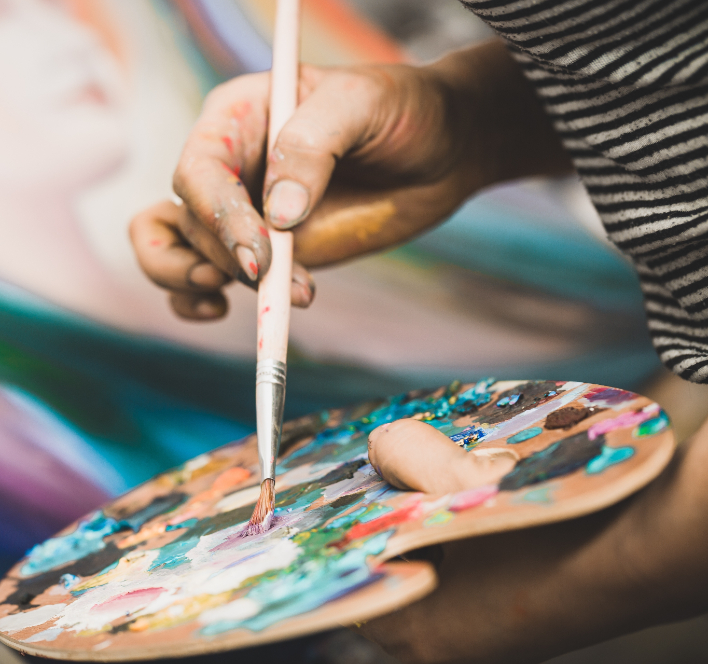Right now, back pain is hitting people from all walks of life and honestly, it's one of those health issues that doesn't discriminate by age or lifestyle. Here's the thing: your discomfort might be coming…
People don’t usually think of drawing, painting, and other artistic careers as involving a risk for injury. However, simply utilizing a pencil or paintbrush can become painful over time for many artists. There is a common misconception that physical pain is necessary to become a better artist, but this is not true. Repetitive strain injuries, such as tennis elbow or carpal tunnel syndrome, are prevalent in the art community. Continue reading to learn more about how artists can prevent wrist pain and tips on treating it.
Keep in mind that it is essential to monitor your symptoms. Most wrist pain will go away on its own within a few weeks. However, if your pain continues or increases, contact the doctors at Orthopedic & Laser Spine Surgery. Our award-winning specialists will work with you to diagnose the cause of your pain and develop a treatment plan specifically for your needs.
Stretch Your Wrists
One of the easiest ways to prevent and treat wrist pain is by taking frequent breaks and stretching. Take a short 10-minute pause every hour. Depending on your situation, breaking every 20-30 minutes can be helpful, too.
By performing stretches intermittently while drawing or painting, you can reduce the pain and pressure on your wrists. Here are a few hand and wrist stretches that may help:
- Praying position: Place your hands together in a praying position in front of your face with your elbows touching. Slowly spread your elbows apart, lowering your hands to your waist. Hold this position for about 30 seconds and repeat three times.
- The claw: Hold your palm out in front of you, and bend your fingers until they touch the base of each finger joint. The position should resemble a claw. Hold the position for 30 seconds and repeat at least four times. Consider adding a ball to this stretch if it becomes too easy.
- Finger lift: Put your hand on a desk with the palm down. Gently lift one finger at a time and then lower it. You can also lift all five fingers at once. Do this stretch eight times.
Incorporating various hand stretches, such as hand grips, hand extensions, and wrist curls, is crucial for preventing and alleviating wrist pain.
Interlacing your fingers and stretching upward is an excellent way to alleviate and prevent wrist pain. Simply rotating your wrists for a few seconds can help to mitigate any discomfort, as well.
Adjust or Change Your Tools
Adding a piece of tape or foam to pencils and brushes can lessen the pinching motion you use when gripping tools. Switching out tools for those that put less stress on your wrists can help as well. Some art supply companies even create triangular-shaped pencils and brushes that are more ergonomic for artists. Sharpening your pencil may also agitate your wrists, so consider using an electric sharpener instead of a manual.
Repetitive motions, such as holding a paintbrush or using a pencil, can strain tendons and ligaments, leading to wrist pain.
Use Splints or Bands
If you already have wrist pain, using a splint or band may alleviate some discomfort. Remember, you must wear splints properly otherwise, you run the risk of worsening your pain. Make sure to thoroughly read the instructions before using one, or ask your doctor how to wear it properly. Spending long hours drawing or painting can exacerbate wrist pain, so it’s crucial to take frequent breaks to prevent further strain.
Wearing a splint or band can make a significant difference after you finish drawing, even if you do not feel any discomfort. Wearing it at night may also help because it will prevent you from bending or flexing your wrist while you sleep.
Redo Your WorkSpace
Your workspace may be the reason you’re experiencing discomfort. Other artists have experienced similar issues due to improper workspaces. It’s easy to paint or draw hunched over on the floor or over your desk, but it can cause extreme pain in your wrists and back. While working, you should sit at a desk and adjust your chair to a 100-degree or 110-degree angle. Also, adjust the height so your hands can sit comfortably on the desk. If necessary, put a towel or blanket underneath your wrists for extra comfort. Repetitive stress from poor ergonomics can lead to chronic injuries, such as carpal tunnel syndrome and muscle pulls, negatively affecting the quality of your art.
Contact the Skilled Doctors at Orthopedic & Laser Spine Surgery
If your wrist pain from drawing or painting becomes unbearable or if you’ve been dealing with the pain for months, contact Orthopedic & Laser Spine Surgery today. A cautionary tale involves an artist who developed ganglion cysts due to overuse and strain on her wrist from repetitive artistic work. Our board-certified doctors utilize the latest research to diagnose and treat several conditions and work with you to ease your discomfort through conservative healing methods and minimally invasive surgeries. To speak with a doctor about your wrist pain, call 407-712-8789 or complete our contact form to schedule a consultation. It is crucial for professional artists to maintain their health to ensure the longevity of their careers and avoid work-related injuries.

